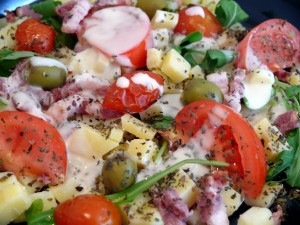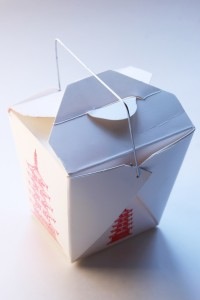Have you ever looked down to see crumbs all over your lap with a telltale wrapper clutched in your hand, and asked yourself, “Why did I eat that?” Or, maybe after your second helping of spaghetti followed by ice cream, followed by a horrendously full stomach you’ve thought, “I’m such an idiot, why did I eat all of that?”
Why, Oh Why?
Why do we eat so much – often when we’re not even hungry? There are a bunch of reasons. They’re not difficult to understand – the hardest part is forcing yourself to take a good look at your habits and routines.
What Time Is It?
You might not realize it, but your body generally likes routines and your brain likes structure. One reason you’re hungry at noontime is because you’ve taught your body to expect breakfast, lunch and dinner around the same time every day. So you eat at the appointed hour – hungry or not.
See It, Eat It
Your body anticipates what and when food is coming. Doesn’t your mouth water thinking about Mom’s Christmas cookies or the hot cheesy pizza from your hometown hangout? How difficult is it to not eat once your mouth is watering and the thought of that food gets into your head?
Variety Is The Spice Of Life
You could chow down on a large meal but, as full as you might be, still make room for dessert. Why? Probably because your desire for something sweet hasn’t been satisfied. Monotony often leads to searching for something different. Ever been on a diet where you eat the same thing all of the time? What generally happens when you can’t stand it any more? Enough said.
Doesn’t That Smell Delicious?
Sight and smell can start a cascade of appetite signals. The wafting scent of something delicious is one way your body knows that food is close by. This can trigger insulin secretion – which makes you think you’re hungry. If you think you’re hungry, you eat.
Booze
Beer, wine or liquor can impair your judgment, which often results in eating more. Watching what you eat is harder if you’ve been drinking.
It’s Cold Outside – Or In The Restaurant
Ever walk into a restaurant and feel like you’re going to freeze? Restaurants often intentionally keep the thermostat set low because the colder the temperature, the more you tend to eat. Heat can act as a satiety signal. Your metabolism tends to drop when it’s time to eat and eating warms you up.
Candy, Pasta, Cereal, Bread, Cookies; Refined Carbs and Sugars; A Whole Lot Of White Stuff
If you eat a meal that’s filled with refined carbohydrates like white pasta or white rice, in only a few hours your body may crave food again. Simple carbohydrate foods are digested quickly which causes blood sugar to spike and then drop. When your blood sugar crashes, you’re a lot more interested in food because your body is sending messages to take in food to help raise blood sugar levels again.
Habits and Routines
Doing the same thing each day, taking the same route home, going into a restaurant with a certain specialty, walking into Mom’s kitchen and heading straight for the cookie jar, are all habits or routines. For instance, many people find that changing up the route home – avoiding passing right by their favorite bakery or ice cream parlor – will eliminate the craving for a food that had become part of an afternoon routine.
Holidays, Traditions, and Celebrations
Somehow special events scream, “All filters, guards, restraints, and rational thinking are dismissed for the event, day, or season.” Think about the last wedding you went to, Thanksgiving dinner, or last year’s mega Christmas party. Did you eat and drink more than you wanted to – or should have? Why? For many of us a special occasion signals eat and drink without constraint.
Happy, Sad, Spurned, Rejected, And Any Emotion In Between
Yep, emotions. Emotional eating is a frequently a way people suppress or soothe their stress, anger, fear, boredom, sadness, loneliness, and a whole spectrum of negative emotions. These are things that can be caused by major life events or by the hassles of every day life. High calorie, sweet, and fatty foods, often in large quantities, tend to be the choice of emotional eaters.
SocialDieter Tip:
Most of us have times when we eat when we’re not hungry. Sometimes it’s a one shot deal – or maybe it’s something that happens annually, like at Thanksgiving or Christmas. We can learn to manage by balancing caloric intake and increasing activity levels. But, if emotional eating triggers smothering stress or unhappiness with food – or if eating becomes a form of procrastination or relief from boredom, extra weight can begin to pile on. It may be time to take stock of your habits and routines and to come up with a plan to shake things up a bit.




